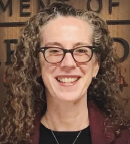When combined with high out-of-pocket costs for cancer care, nearly 60% of working-age cancer survivors report experiencing at least one type of financial hardship, including being unable to afford medical bills, distress and worry, or delaying or forgoing needed care because of cost, according to study results published in CA: A Cancer Journal for Clinicians.1 Increasing the availability of comprehensive and affordable health insurance; ensuring paid, job-protected leave; and connecting cancer survivors with financial resources may help to mitigate lasting financial harms, according to Robin Yabroff, PhD, MBA, Scientific Vice President, Health Services Research, American Cancer Society, and colleagues.

Robin Yabroff, PhD, MBA
Research shows that the average cost of medical care and drugs can top $42,000 in the first year after a cancer diagnosis,2 with some treatments, including chimeric antigen receptor (CAR) T-cell therapies, exceeding $1 million.3 And for many cancer survivors, these costs may have a lingering impact on their financial well-being.
Study Methodology and Results
The researchers used a composite patient case to illustrate the adverse consequences of a cancer diagnosis and treatment on employment, health insurance coverage, household income, and other aspects of financial hardship. They then summarized existing research and provided nationally representative estimates of multiple aspects of financial hardship and health insurance coverage, benefit design, and employee benefits (such as paid sick leave) among working-age adults with a history of cancer compared with estimates among working-age adults (aged 18–64) without a history of cancer from 2019 to 2021, the most recently available years of the National Health Interview Survey.
KEY POINTS
- Nearly 60% of working-age cancer survivors reported experiencing at least one type of financial hardship, including being unable to afford medical bills, distress and worry about paying for care, or delaying or forgoing needed care because of cost.
- Although financial hardship is highest among adults with a cancer history who live in households below the federal poverty level, it is also common among those living in higher income households.
The researchers found that adults aged 18 to 64 with a cancer history in the United States were more likely to report that in the past 12 months they experienced any medical financial hardship compared with their counterparts who had no cancer history (57.3% vs 53.5%; P < .05), including problems paying medical bills (21.6% vs 12.7%; P < .05) or delayed or forgone care because of cost (12.7% vs 9.2%; P < .05). Stress and worry about medical bills were similar among adults with and without a cancer history (52.5% vs 50.2%, respectively). Although the prevalence of financial hardship is highest among adults with a cancer history who live in households at < 200% of the federal poverty level (FPL) [67.5%], it is also common among those living in higher income households (66.6% and 43.8% at 200%–399% and > 400% of the FPL, respectively).
Although the researchers found that the prevalence of medical financial hardship is highest among working-age adults without health insurance (83.7%), their results also showed that survivors experience financial hardship even when they have public or private health insurance (58.3% and 52.9%, respectively).
In addition, adults with a cancer history were more likely to report having food insecurity in the past 30 days compared with those who did not have a cancer history (20.0% vs 14.3%, respectively; P < .05), including worry about food running out, food not lasting, or the inability to afford balanced meals.
Mitigating Financial Hardship
The researchers suggest that increasing the availability of comprehensive and affordable health insurance coverage; ensuring sufficient, paid, job-protected leave to allow patients to maintain employment and household income; and connecting patients and their families with this information as part of routine cancer care may help lessen the long-term financial harms of a cancer diagnosis.
“Rigorous research can identify best practices, and, when combined with efforts to increase the affordability of cancer treatment, our proposed approaches can better enable patients and their families in the United States to benefit from the remarkable advances in cancer treatments without suffering potentially avoidable financial hardship,” concluded the study authors.
DISCLOSURE: Dr. Yabroff reported service on the Flatiron Health Equity Advisory Board and on a National Comprehensive Cancer Network workgroup outside the submitted work. For a full list of disclosures for the study authors, visit acsjournals.onlinelibrary.wiley.com.
REFERENCES
2. Mariotto AB, Enewold L, Zhao J, et al: Medical care costs associated with cancer survivorship in the United States. Cancer Epidemiol Biomarkers Prev 29:1304-1312, 2020.
3. Antrim A: Study finds total cost of care for CAR-T, post-treatment events can exceed $1 million. Pharmacy Times, April 13, 2021. Available at http://www.pharmacytimes.com/view/study-finds-total-cost-of-care-for-car-t-post-treatment-events-can-exceed-1-million. Accessed May 6, 2024.

